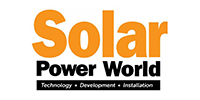
Solar Power World recently spoke with Zachary Cox, VP of operations at U.S. Battery Manufacturing, about the current state of the U.S. energy storage market. The deep-cycle, lead-acid battery manufacturer attributes the recent increase in energy storage system deployments to improved battery technology and utility flexibility, but Cox noted there’s still a long way to go to figure before cost-effective, long-duration storage is more commonplace.
Solar Power World recently spoke with Zachary Cox, VP of operations at U.S. Battery Manufacturing, about the current state of the U.S. energy storage market. The deep-cycle, lead-acid battery manufacturer attributes the recent increase in energy storage system deployments to improved battery technology and utility flexibility, but Cox noted there’s still a long way to go to figure before cost-effective, long-duration storage is more commonplace.
SPW: What do you think is the reasoning behind batteries finally finding some traction in the United States?
Cox: Improvements in battery technology have fueled the increased adoption of energy storage over the past decade or so. More recently, I think a major factor has been the curtailment or elimination of net metering with many utility providers. If net metering is eliminated or curtailed, the economic benefit of solar power is significantly diminished. Batteries provide a way to store the excess generation for use at night, reducing or eliminating the need for grid provided power.
In addition to net metering playing a role for residential and commercial users, utility companies themselves are implementing storage technology to give them flexibility on the grid. Energy storage provides utility companies the ability to distribute load during peak demand or ride through supply interruptions.
Another big factor for increased storage installations is the formal commitment to clean energy in states like California, Washington and New York. Last year, Governor Brown of California signed legislation committing to 100% renewable energy by 2045. In order to make this goal a reality, energy will need to be stored somewhere. The big question is where: front-of-the-meter, residential behind-the-meter, commercial behind-the-meter, or a combination of all three? If you take a look at where we are now, all three are seeing somewhat even deployment capacities.
SPW: How can we make storage adoption even greater in the United States?
Cox: One of the biggest challenges will be developing battery technology that is safe, has a low cost of ownership, provides high performance characteristics and is environmentally friendly. Lithium-based battery technologies can provide high performance, but their high cost, low recyclability and spotty safety record create huge challenges for further growth. Lead batteries provide safety, the lowest cost of ownership and the highest recycling rate of any product in the world (99%), but they currently lack the performance needed for large-scale systems. The key to the future of energy storage will be the improvement of both of these technologies and the development of new technologies to meet the growing demand.

Recent Comments